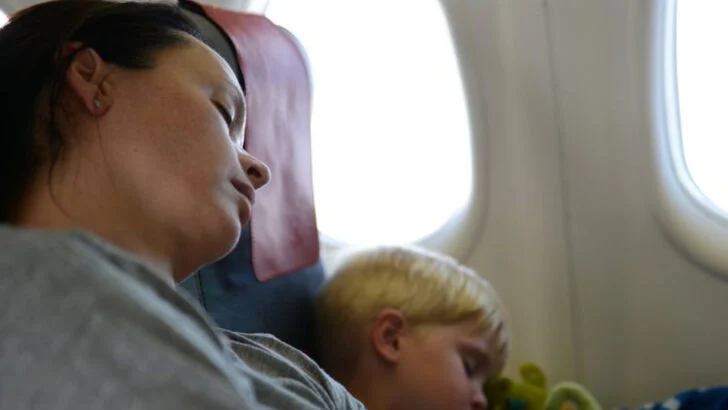Sleep on a plane feels like chasing a dream you can never quite catch. The cabin lights are too bright, the engine hums endlessly, and just when you start to drift off—someone bumps your elbow or the food cart rattles by. It’s no wonder most travelers land feeling more exhausted than when they left. But here’s the truth: with the right tricks, drifting off in the sky isn’t impossible. In fact, it can be easier than you think when you prepare smartly and set yourself up for success. From choosing the best seat to learning how to tune out the chaos around you, there are small steps that make a huge difference. Forget tossing and turning upright for hours—comfort can be created even in coach. If you’ve ever envied those lucky few who snooze through turbulence and time zones, get ready. These 16 tips might just change the way you travel forever.
Choose the Right Seat
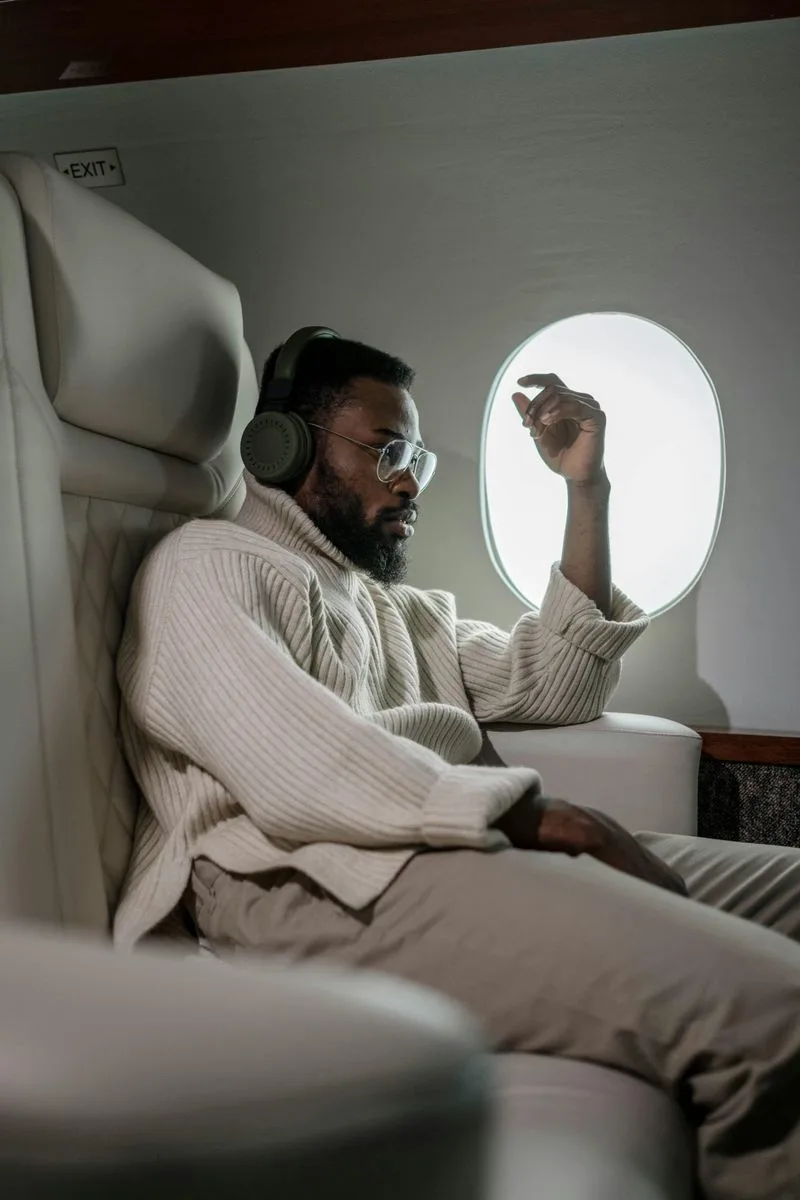
Selecting a window seat can be your ticket to a more restful flight. It provides a solid surface to lean on, helping you find a comfortable position. Not dealing with passengers climbing over you adds to the peace. Avoid seats near restrooms, where commotion is constant. The extra foot traffic and noise can be disruptive. Picking a seat away from the galley also helps, as you’ll be away from the clinking of meal carts. Prioritizing these aspects makes a significant difference in the flying experience. It’s about reducing interruptions and maximizing comfort.
Time Your Flight Wisely
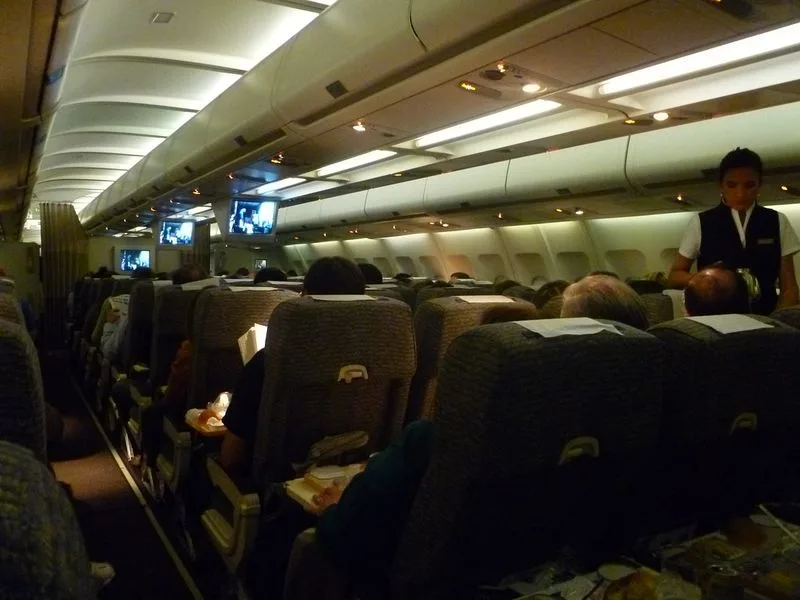
Timing is everything, especially for catching some sleep on a plane. Opting for an overnight “red-eye” flight aligns with your natural sleep schedule. These flights tend to be quieter, as more passengers are inclined to sleep. You’ll find the cabin darker, which makes it easier to doze off. Flying during midday often means battling against your body’s natural rhythms. Moreover, night flights can save you hotel costs by using your travel time as rest time. This choice is a blend of practicality and comfort, enhancing the likelihood of restful travel.
Wear Comfortable Clothing
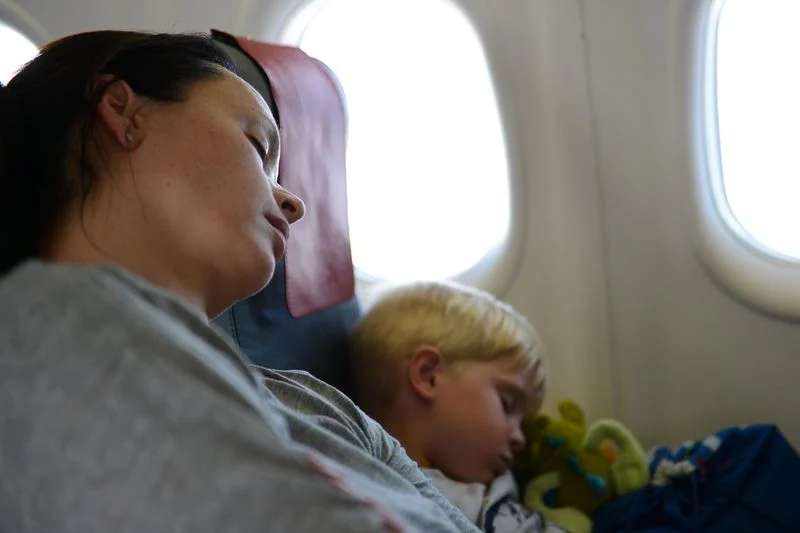
Comfort is key when it comes to sleeping on a plane, and your clothing plays a big role. Loose, breathable fabrics help your body regulate its temperature and relax. Tight or synthetic clothing can make you uncomfortable and restless. Layers allow you to adjust to the varying cabin temperatures. The goal is to feel as cozy as possible. This simple adjustment can significantly impact your ability to sleep. It’s about setting a comfortable foundation for your journey. Dressing for rest is as important as preparing your carry-on essentials.
Bring a Quality Neck Pillow
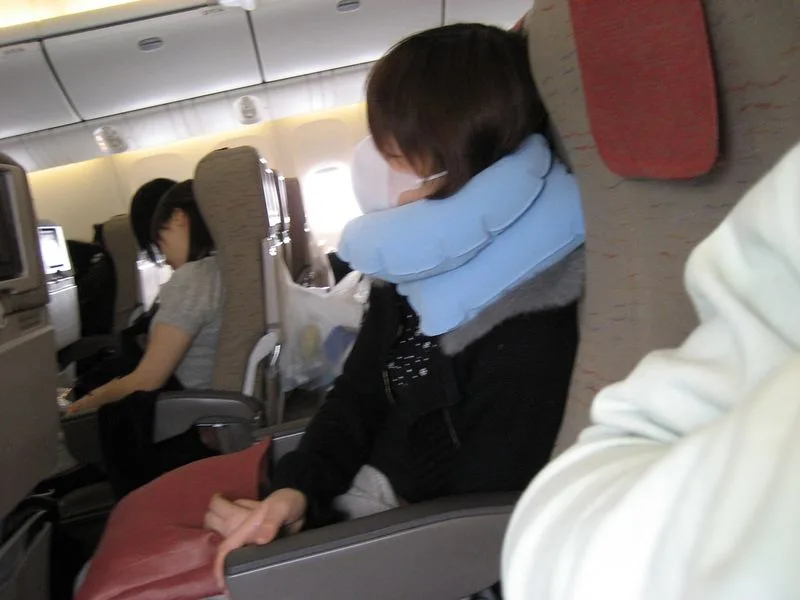
A neck pillow is more than just an accessory; it’s a necessity for in-flight comfort. These pillows prevent your head from nodding awkwardly, which can wake you up. A good pillow supports your neck, reducing stiffness and soreness. Opt for a memory foam version that molds to your shape. This support is crucial, especially on long flights. Investing in a quality neck pillow turns cramped quarters into a more restful space. It’s a small purchase with big benefits, making the idea of sleeping while flying more feasible and pleasant.
Block Out Noise

Airplanes can be noisy, making ear protection vital for sleep. Noise-canceling headphones or foam earplugs are great tools to reduce ambient sound. They help drown out engine roar, crying babies, and chatty neighbors. Creating a quieter environment helps your mind relax. The less noise, the easier it is to drift into sleep. These gadgets transform your seat into a personal oasis. Silence is golden when trying to rest on a plane. These additions to your travel kit help ensure you have the peace needed for a good nap.
Control the Light
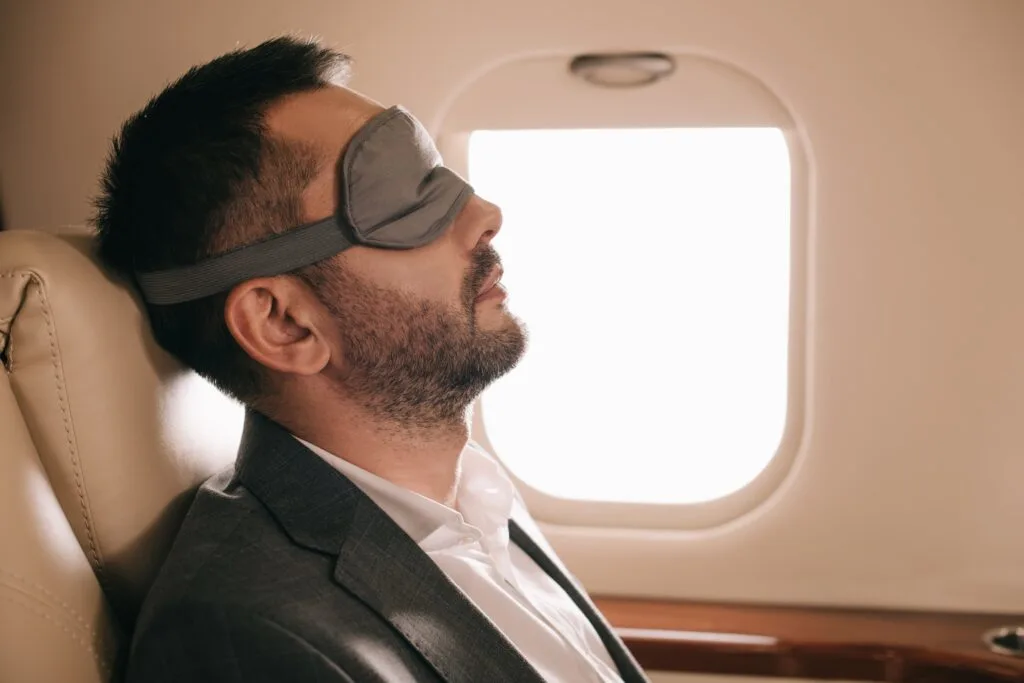
Light control is a simple yet effective way to induce sleep on a plane. An eye mask can be your best ally, tricking your brain into ‘night mode.’ This is especially useful when cabin lights are on, or daylight filters through. A good mask blocks unwanted light completely. This helps your body release melatonin, the sleep hormone. It’s a natural way to sync your body with your intended rest time. With an eye mask, you create a dark cocoon, ideal for catching some sleep. It’s a small tool with a significant impact.
Skip the Caffeine and Alcohol
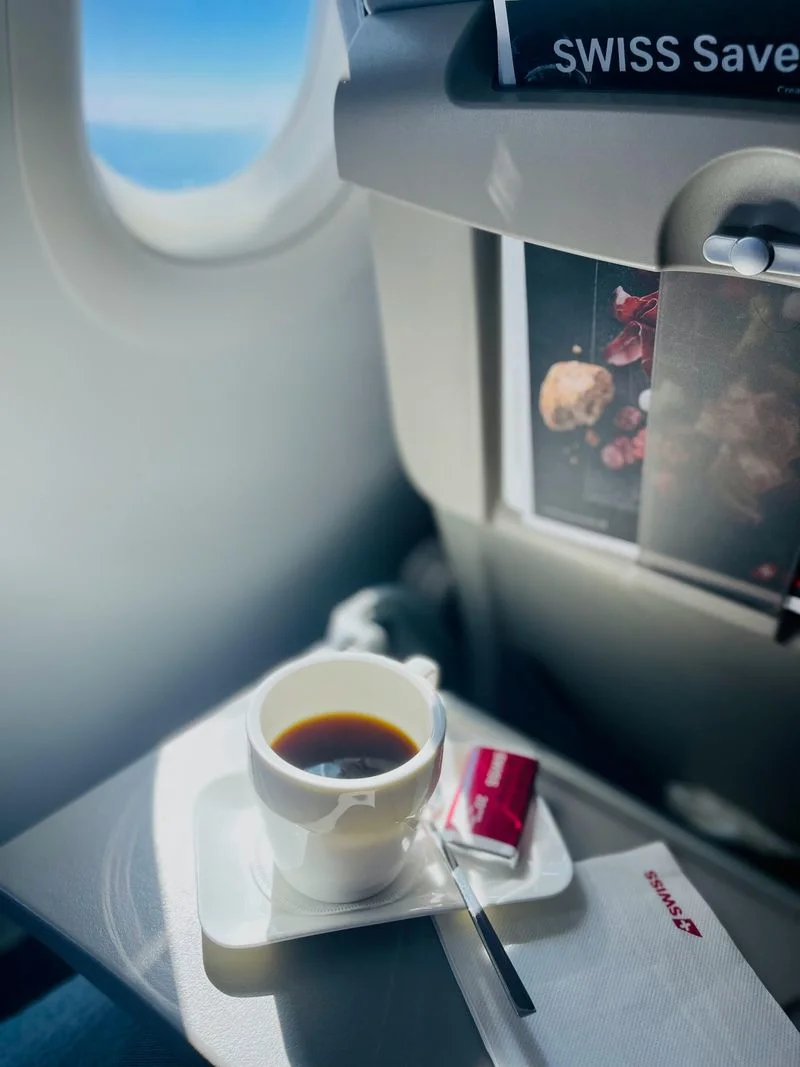
What you drink before and during a flight can affect your sleep. Caffeine and alcohol seem tempting but can disrupt your sleep cycle. Stick to water or herbal tea, which keep you hydrated and calm. Caffeine keeps you alert, while alcohol can cause restless sleep. Both can leave you dehydrated and uncomfortable. Hydration is crucial at high altitudes. Opting for calming beverages means you’re choosing a restful flight. The decisions you make about what to drink directly impact your ability to fall asleep and stay asleep during travel.
Eat Light Before Boarding
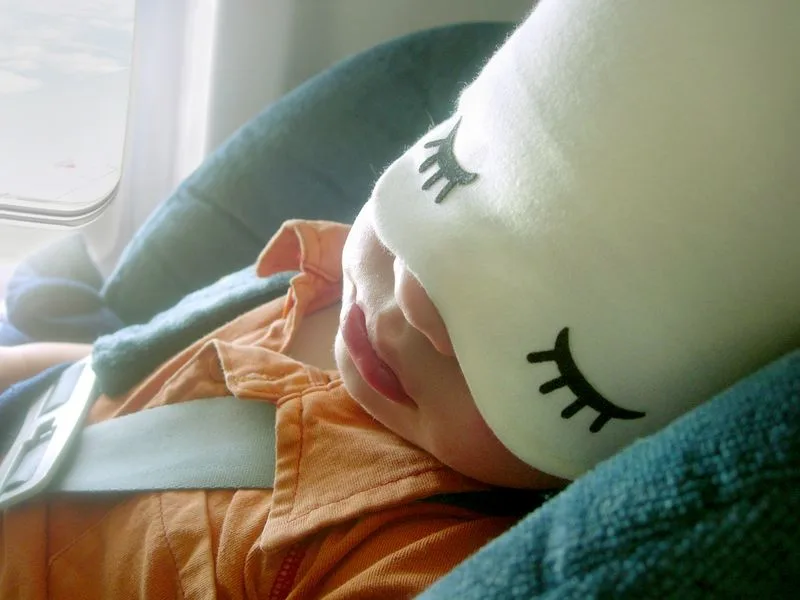
Eating a heavy meal before a flight can make sleep uncomfortable. A light snack is a better choice, keeping you satisfied without causing indigestion. Heavy meals can lead to discomfort and gas, especially at altitude. Instead, consider foods like nuts or fruit, which provide energy without bloating. These choices help maintain comfort and enhance sleep potential. It’s about feeding your body what it needs, not weighing it down. Eating right sets the stage for a smoother, more restful flight. Your stomach will thank you, and so will your sleep.
Adjust Your Watch to Destination Time
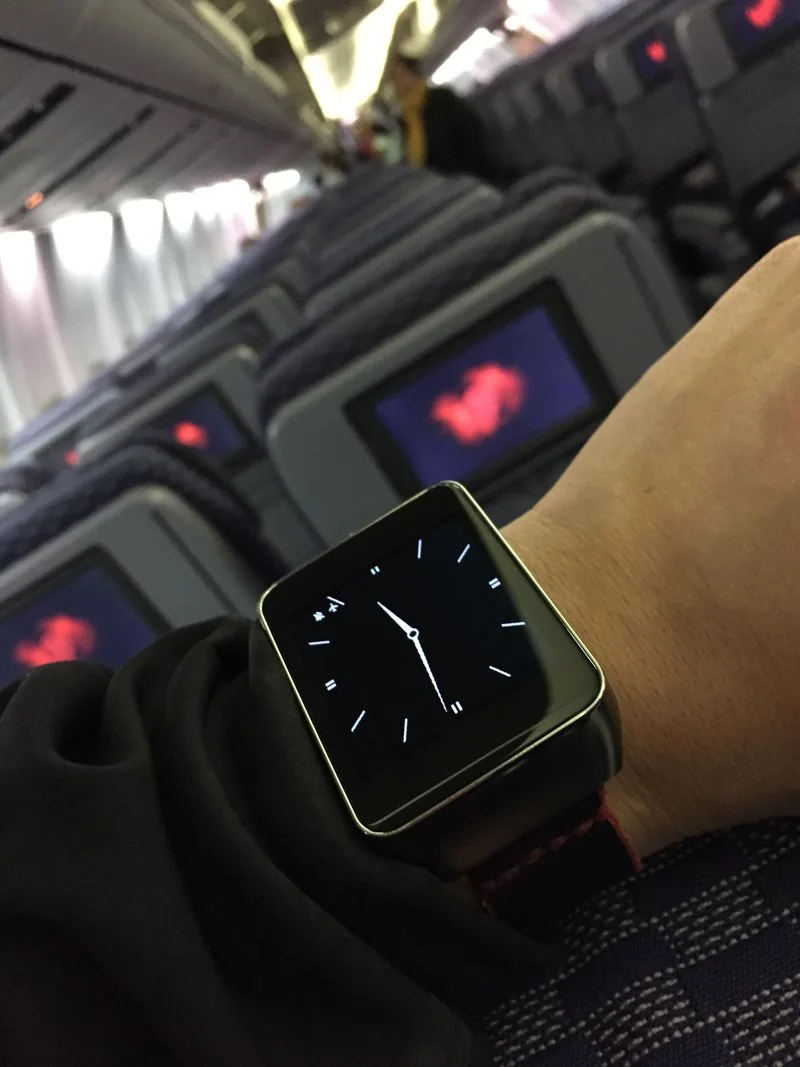
Setting your watch to your destination’s time can be a game-changer for sleep on flights. It mentally prepares you for the new time zone well before landing. This simple act can help minimize jet lag. Your body starts aligning with the new schedule, making it easier to rest on the plane. By syncing your internal clock early, you reduce the shock of time differences. It’s a mental trick that has a physical payoff, especially on long-haul flights. This proactive step aids in smoother transitions, promoting better sleep and post-flight alertness.
Recline Politely

Reclining your seat can significantly improve your comfort and chances of sleeping. A slight recline reduces pressure on your spine and hips, enabling relaxation. However, always be courteous. Check with the passenger behind you before leaning back. Politeness ensures everyone has a pleasant flight. Reclining helps distribute your body weight more evenly, easing tension. This thoughtful move transforms the seat into a more supportive sleeping position. It’s about finding balance between comfort and consideration, making everyone’s travel experience more enjoyable and restful.
Practice Relaxation Techniques
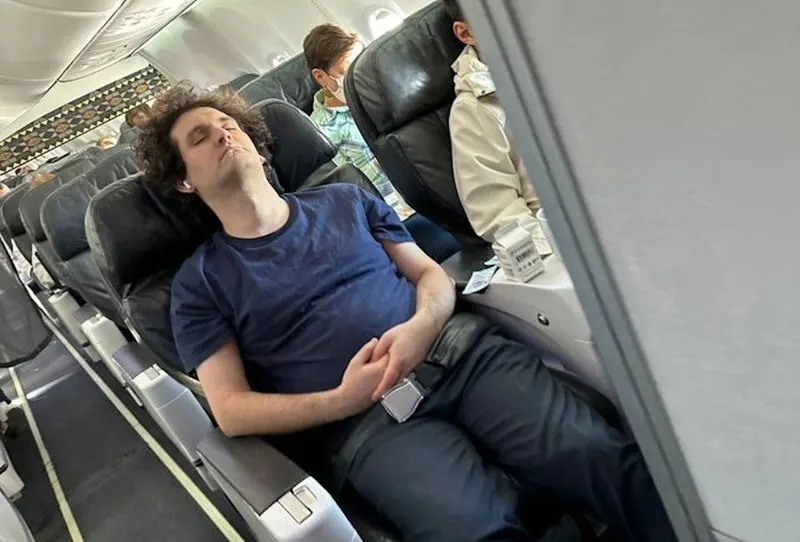
Preparing your mind for sleep is as important as preparing your body. Relaxation techniques like deep breathing or meditation can reduce pre-flight anxiety. Apps with calming music or guided meditations can assist in achieving a peaceful state of mind. These practices help slow your heart rate and clear your mind of worries. A calm mind is a step closer to a sleepy one. Incorporating these techniques into your flight routine can transform your travel experience. It’s about creating an internal environment conducive to rest, despite the external chaos.
Keep Warm With a Blanket or Scarf
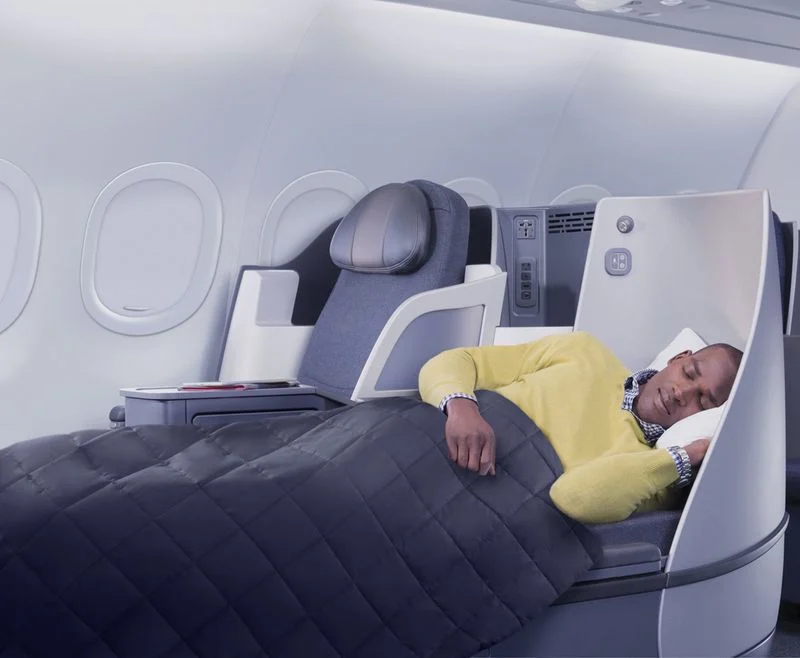
Airplane cabins can get surprisingly cold, impacting your ability to sleep. Keeping warm is essential for relaxation. A travel blanket or oversized scarf can provide the necessary warmth and comfort. They signal to your body that it’s time to rest. The cocoon-like feel adds a layer of security. This small addition to your travel kit can make a world of difference. It’s not just about warmth; it’s about comfort and creating a familiar environment. Staying warm helps maintain your body’s relaxed state, paving the way for better in-flight sleep.
Mind Your Feet
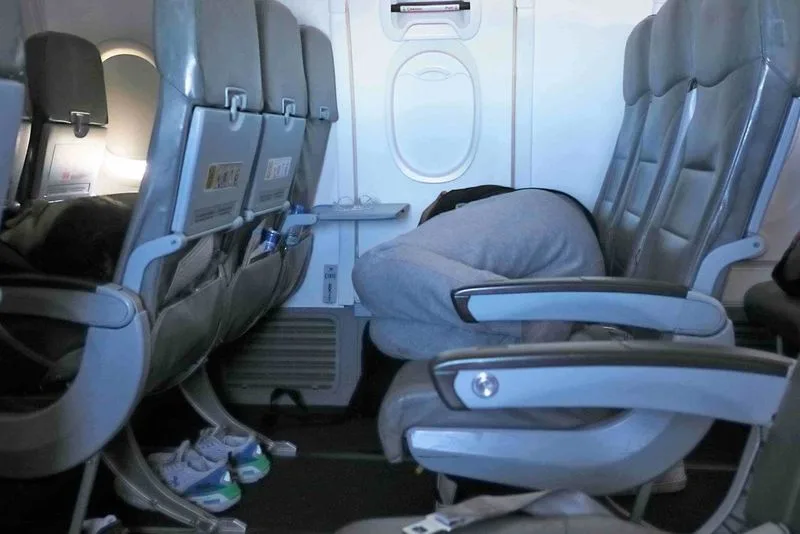
Comfort starts from the ground up. Paying attention to your feet can enhance your overall comfort and sleep quality. Removing shoes and wearing clean socks can make a big difference. Consider using compression socks to improve circulation, reducing restlessness and swelling. A small footrest or propping your feet up can help alleviate pressure. This care for your feet translates to better relaxation and sleep potential. It’s about ensuring every part of your body is catered to, starting from the bottom. Happy feet lead to a happier, more rested you.
Use Sleep Aids Cautiously
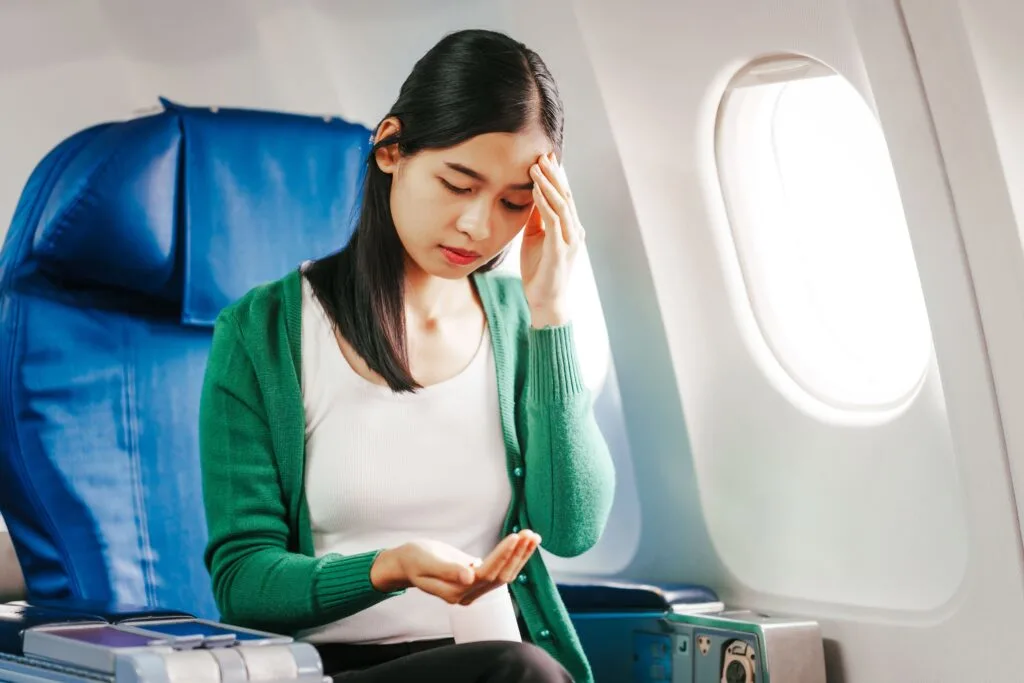
Sleep aids can be tempting when all else fails, but they should be used judiciously. Over-the-counter options like melatonin can be helpful, but it’s best to consult a doctor first. Use them sparingly to avoid dependency. Such aids can help regulate your sleep cycle, especially on long-haul flights. However, they may have side effects like drowsiness upon arrival. It’s crucial to weigh the benefits against potential drawbacks. Ensuring you remain in control of your sleep means avoiding over-reliance on these aids. Use them as a last resort, not a first choice.
Create a Sleep Routine
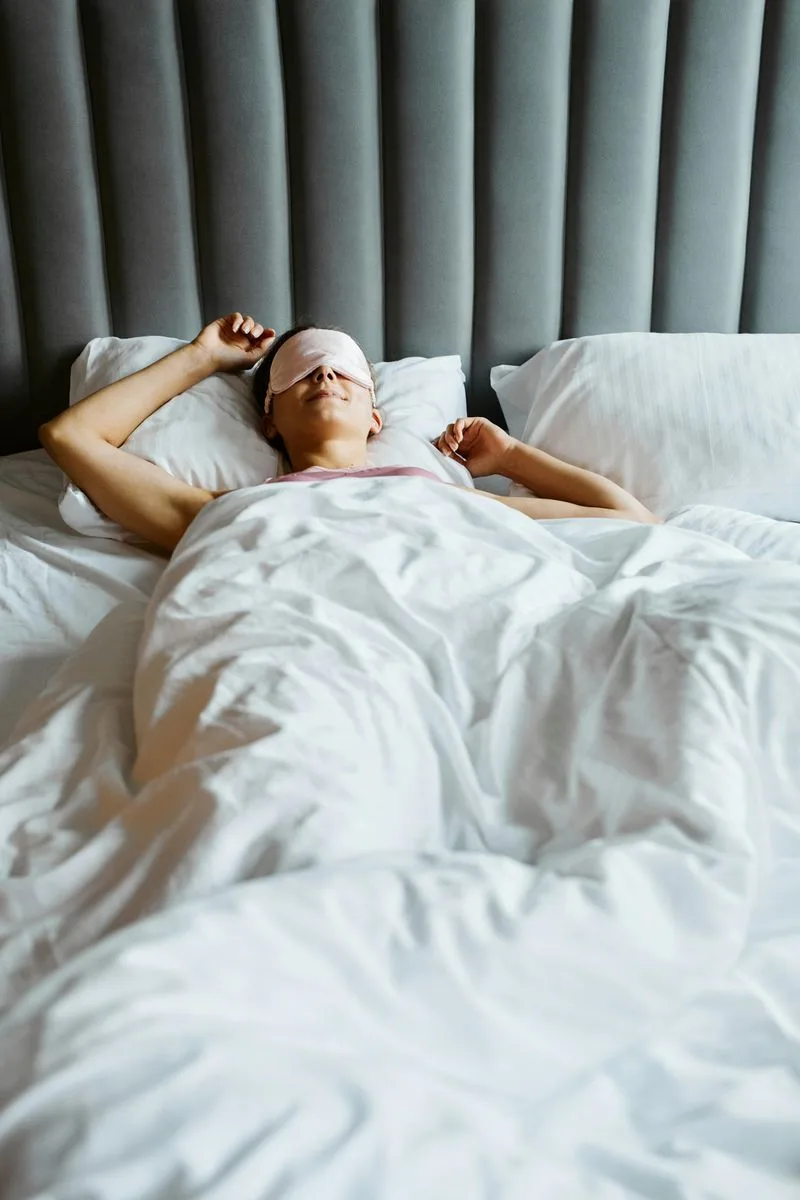
Establishing a sleep routine can make all the difference. Mimic your at-home bedtime habits to cue your brain that it’s time to sleep. Whether it’s reading a few pages, listening to music, or meditating, consistency helps. These habits signal to your body that it’s time to wind down. Creating an airborne version of your sleep routine eases the transition to rest. The familiarity provides comfort, reducing stress and enhancing relaxation. It’s about bringing a piece of home with you, no matter where you are. This routine is your secret weapon for better sleep.
Don’t Stress If You Can’t Sleep
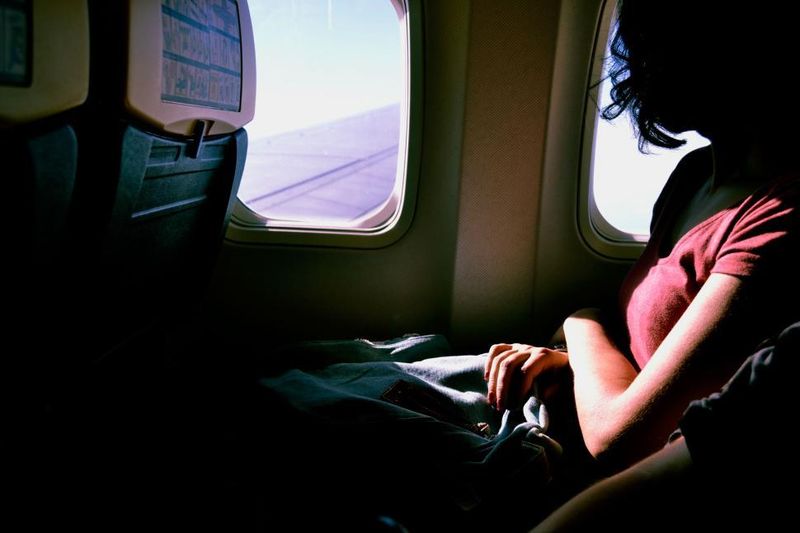
Sometimes sleep just doesn’t come, and that’s okay. Light dozing or simply resting with eyes closed can be refreshing. Stressing about not sleeping can worsen the situation. Accepting wakefulness can relieve pressure and aid relaxation. It’s about making the best of the situation and finding peace in stillness. Acknowledge that even rest is beneficial. This mindset shift can transform how you experience plane travel. When sleep eludes you, focus on relaxation instead. Embracing the calm can be just as rewarding as a full night’s sleep.

